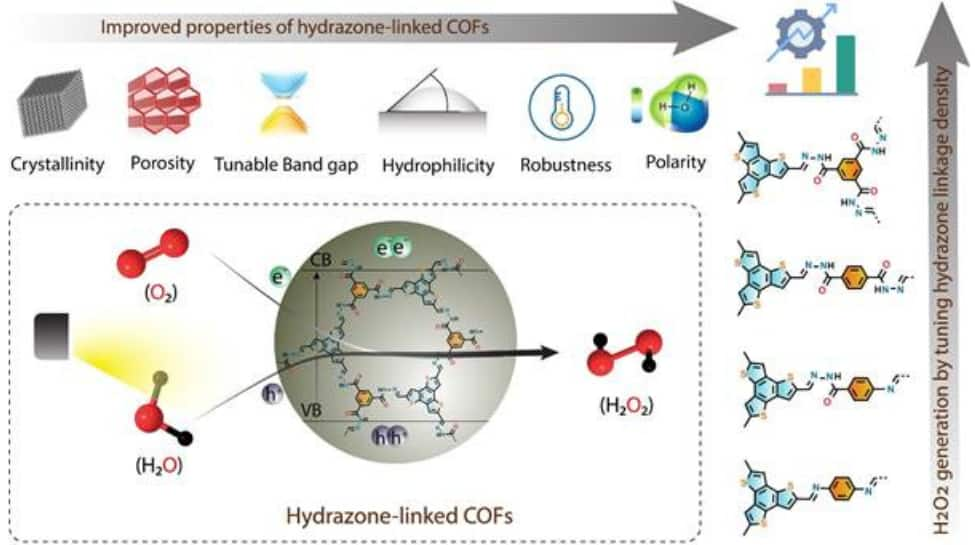Revolutionizing Hydrogen Peroxide Production through Innovative COF Photocatalysts
Key Ideas
- Researchers in Kolkata developed hydrazone-linked COFs for efficient and environmentally friendly H2O2 synthesis.
- The COFs demonstrated exceptional photocatalytic H2O2 production under LED and sunlight irradiation.
- This breakthrough offers a sustainable pathway for H2O2 production from renewable resources, minimizing environmental impact.
- The method using a water-benzyl alcohol solution shows promise for developing a continuous flow reactor for industrial H2O2 production.
Researchers at the S. N. Bose National Centre for Basic Sciences in Kolkata have made significant progress in the synthesis of hydrogen peroxide (H2O2), a chemical crucial for various industries. By designing hydrazone-linked covalent organic frameworks (COFs) with good water affinity, the team achieved efficient H2O2 generation through photocatalysis. This innovative approach not only reduces energy consumption but also minimizes environmental impact, offering a more sustainable pathway for H2O2 production. The COFs showed remarkable performance under both LED and sunlight irradiation, outperforming many existing organic photocatalysts. The method using a water-benzyl alcohol solution proved effective in preventing H2O2 degradation, paving the way for the development of continuous flow reactors for industrial-scale production. This breakthrough represents a positive step towards environmentally friendly and cost-effective H2O2 synthesis, with potential implications for various applications in disinfection, paper bleaching, and beyond.
Topics
Production
Innovation
Sustainability
Environment
Research
Renewable Resources
Chemistry
Industry
Technology Transfer
Latest News
